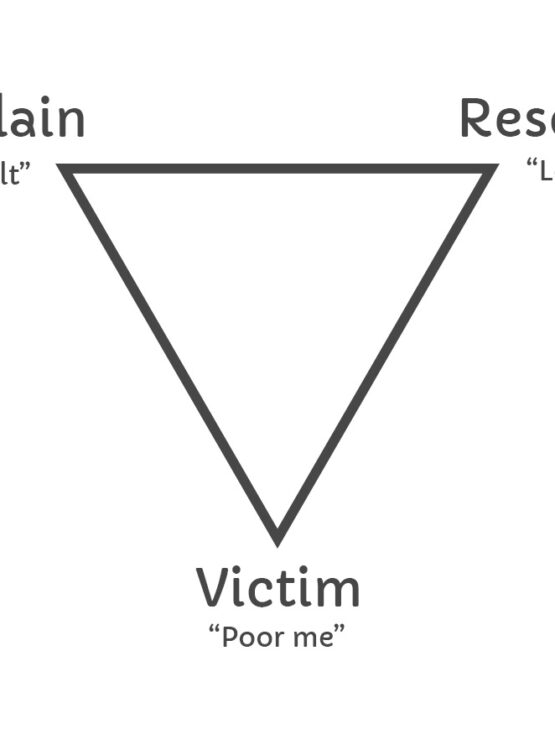The Ultimate Guide to Setting Boundaries in Relationships

Maybe you’ve heard that having boundaries in your relationships is really important. While this is good advice, it doesn’t begin to explain exactly what boundaries are, how you can find yours, or communicate them to the people you’re in relationships with.
In my intimacy coaching work, boundaries are often among the first topics I address with my clients, as so many of us didn’t grow up learning how to feel our boundaries – let alone assert them.
In this post I’ll cover what boundaries are, what they’re not, and how to start finding and communicating yours.
Let’s start with the basics.
What Are Boundaries?
Boundaries are limits that anyone can set for themselves to determine what they are and are not comfortable engaging with. They’re a method that we all can use for establishing our identity, preferences, and personal space – physically, emotionally, and energetically.
In relationships, this can mean lots of different things, which we’ll cover in more detail below.
To begin with, the most important things to know are that boundaries are:
- Personal – only you get to decide where your boundaries are.
- Contextual – you may have different boundaries at different times, or with different people.
- Empowering – they allow you to say yes or no, take responsibility for what’s yours, and filter out what isn’t.
Boundaries, Limits, and Barriers
It’s important to understand what boundaries are not, too.
Limits are the places at the edge of our boundaries. While boundaries are contextual and may shift around depending on who we’re with and what we’re doing, our limits are the lines which show us when we are being assaulted.
For example, you may enjoy play-fighting or wrestling with a lover, in a way that you wouldn’t want to do with, say, a platonic friend – you have different boundaries for these two people. However, being punched in the face might be a limit for you; it’s something that would never be welcome, whoever you’re with or whatever mood you’re in.
Barriers are rigid, and are often a response to being unable to assert boundaries in a healthy way. Instead of being able to feel and establish boundaries and say yes or no depending on the situation, some people will put up barriers to prevent contact at all. While this can be a useful protection in some circumstances, the trade-off is all too often the inability to ever let others in.
Putting up barriers can be seen as an opposite behaviour to people-pleasing; instead of saying yes to everything, you’re saying no to everything. Lots of people may notice that both of these show up for them in different circumstances.
Different Types of Boundaries
There are all kinds of different boundaries that come into play in different situations. As an intimacy coach I take care to maintain professional boundaries; in a relationship with a partner these are not relevant.
Understanding the different kinds of boundaries can be really helpful in identifying which come easily to you, and which could benefit from some more awareness.
In your romantic and sexual relationships, there are six categories which are most relevant: physical, social, emotional, sexual, cognitive, and material:
- Physical: how do you like to be touched? Greeted? How much physical personal space do you need when you’re having a conversation or sharing a bed with someone? How much physical time apart do you need from a partner or lover? How much touch do you need? If you live together, do you need a room for yourself?
- Social: how much do you share about your relationship, or each others’ lives, with friends? How much time do you want or need to talk about yourself with your partner? How involved are you in each others’ social lives? How do you feel about meeting each other’s friends and families?
- Emotional: how much emotional support do you need? How do you want to be supported when you’re struggling? How much tolerance do you have for your partner’s emotional states? Do you have requirements for your partner’s abilities to process and manage their own emotional baggage?
- Sexual: what kind of sexual contact (if any) are you comfortable with outside of your relationship? What sexual activities are hard limits for you? Which activities do you need to experience to feel satisfied? What do you need in order for sex to feel pleasurable? How much sexual contact do you want with your partners?
- Cognitive: are there topics that you don’t feel comfortable discussing? Do you have particular beliefs or world views that are not compatible with certain people or situations? Are there specific situations or decisions people may ask of you that are against your ethics?
- Material: do you prefer to combine your finances with your partners, or keep them separate? How do you feel about giving and receiving material gifts? How do you manage joint expenses?
How To Find Healthy Boundaries For You
Now you have some idea of all the different ways that boundaries can be expressed, how do you decide what’s right for you in your relationships?
This can be a difficult task if you’re used to following the many scripts we’re socialised with. To take one example: in the culture I grew up in, it’s a norm that after being in a relationship for a year or two, my partner and I will move in together.
What if my physical and material boundaries aren’t compatible with that expectation? If I live in an expensive city, and my partner and I can’t afford a home big enough for us to have the personal space we need, should I violate my boundaries in order to do the ‘normal’ thing?
Chances are, when you read through the list of categories above, some of them resonated with you more than others. Which provoked a biggest reaction in you? Do you have a sense of which types of boundaries come easily to you (if any), and which you didn’t even realise could exist?
Having awareness of these places is the most important first step. Begin to ask yourself questions about what you really want from the people you’re in relationships with – and what you really want to offer them, too. If you journal or meditate, or have a different self-reflective practice, try introducing some of these themes and see what arises for you.
It can also be helpful to learn to pay more attention to your body’s cues. Your body will have a reaction (a gut feeling, perhaps) when one of your boundaries is violated, whether you’re conscious of it or not. Beginning to listen to these reactions, however subtle, can be a really great way to begin noticing when something isn’t right. This information can help to inform your boundary-setting in the future.
Ultimately, healthy boundaries are the places where you can give another person your love and support without compromising yourself and your needs. Boundaries are vital for our mental health: if you’re often feeling drained, tired, or resentful with your partner, then this could mean that you’re violating your own boundaries in your relationship. Noticing if and when these feelings come up can be helpful clues to point you towards where your boundaries are.
Allowing someone to violate your boundaries is also an act of you violating your own boundaries. Whenever someone behaves in a way that isn’t aligned with your wants and needs, you have the responsibility to communicate that with them and ask for something different, or remove yourself from the situation.
Which bring us to…
How To Communicate Personal Boundaries
Communicating boundaries can feel really edgy and vulnerable because it’s a skill many of us haven’t learned. To give a couple of examples, many young children are tickled by their parents despite being asked to stop. Or they are told they must hug or kiss relatives, even if they don’t want to. This teaches children that their boundaries will not be respected, and – worse – their ‘no’ may result in punishment or withdrawal of affection.
So, how do we learn as adults?
First of all, it’s important to get clear not only on what your boundaries are, but also on how you will behave if your boundaries are not respected. This isn’t about punishing the other person – it’s about knowing how you’ll remove yourself from a situation where your boundaries are being violated. Hopefully you won’t need to communicate this, but it’s important that you’re clear on it so that you can if you need to.
When discussing boundary issues, talk only about your own experience and your own needs, and take responsibility for yourself. Be clear in your language. Non-Violent Communication has a helpful structure which we can borrow here:
1: Observation
State a fact that you’ve noticed, using “I” sentences. Avoid accusing the other person of anything, voicing an opinion, or mentioning any emotions at this stage. The aim is to state something as neutrally as possible that the other person can agree with.
“I notice that I initiate most of our plans for seeing each other.”
2: Feeling
How does this make you feel? Try to stick only to emotions here, rather than getting caught in stories, and again focus on your own experience only.
“I feel insecure and sad about this.”
3: Need
State the need you have in this situation. What’s your boundary?
“I have a need for reciprocity and reassurance that you want to see me as much as I want to see you.”
4: Request
Ask the other person for what you need in this situation. Be as specific as possible; avoid asking them to make you feel a particular emotion, and instead ask them to take specific actions that would have the same effect.
“I’d like to request that you take the lead in organising more of our dates, and ask me more often when we can see each other next.”
5: Check in
Finally, ask how this landed for them. Give them your full attention as they respond to your request.
“How does that sound to you?”
When discussing boundary issues it can also be helpful to focus on the positive result of having your boundaries respected. Hopefully, both you and your partner want the same thing: perhaps it’s a close, intimate relationship built on love and trust. Framing the discussion with this perspective can help to remind you both that you’re on the same side, and avoid the conversation becoming an argument.
In the “need” section of the framework above, you could include this by saying something like,
“An important part of intimacy for me is to feel reciprocity and reassurance. I love the intimacy that we have together, and hearing that you want to see me as much as I want to see you would help me to feel much more secure in our relationship.”
Hopefully this will start a productive conversation with your loved one and result in a change in behaviour that helps you to get your needs met.
It’s important to note that if your needs are opposed to the other person’s boundaries or desires, you may have to consider what this means for your relationship. There may be a compromise you’re willing to make, or it may mean that you need to change the amount or type of intimacy you can enjoy with that person. For example, if I find out that one of my friends can’t keep secrets, I may not necessarily feel I need to end our friendship – but I may decide to no longer talk with them about deeply personal topics.
Finally…
If this seemed like a lot, I’d encourage you to take everything slowly. Learning how to be better with your boundaries can be a lifelong journey, and it’ll likely feel easier in some situations than in others. It’s an extremely useful enquiry to make though, and very worth it – when you get clearer on your wants and needs, and better at communicating them, all of your relationships will benefit.




8 Comments